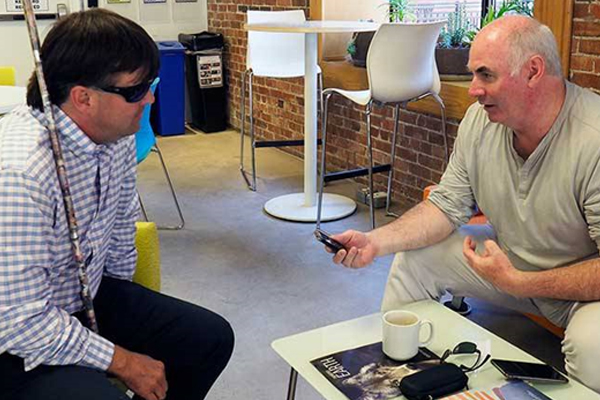|
We are truly the greatest untapped resource on the planet. In fact, when I talk about people with disabilities, I prefer the term ‘corporate ready individuals’. For me, it all starts with changing the perceptions of potential employers. That’s what I am trying to do through my organization, the Blind Institute of Technology (BIT), where we are committed to reducing the high unemployment rate among skilled blind and visually impaired IT and tech professionals.
I have been legally blind since first grade. I owe a lot of who I am to my mother. Instead of placing me in a school for the blind, she was determined to keep me in the public school system. I learned how to use the low-vision technologies available at the time, and I learned how to walk with a cane and read braille.
Being blind has not prevented me from having a full life. The loss of my vision is an inconvenience, nothing more. Immediately after college, I married my wife, Natalie, adopted two daughters and added my son, Maddox to the family. I have competed in martial arts, I am a snow and water skier and a mountain climber.
In the past five years, my organization has placed more than 100 people with disabilities. My job is to go out there, kick in doors and let employers know just how easy it is to seamlessly integrate people with disabilities and add value to the bottom line and to the corporate culture.
For employers, the technology makes the business case persuasive. Some blind people can listen to their screen readers at 300 words a minute. That is faster that a sighted person can consume, looking at a screen.
After a 20-year career in the tech industry, I am living proof that blindness is not the handicap everyone thinks. Now I hope to place hundreds of people every year in Fortune 500 companies. This will be through technology. People with disabilities are perfect candidates for what I call ‘desk jockey’ type jobs. Today’s technology is so accessible. It’s a seamless interface.
The technology is the “how” but the quality of the workers is the “why”. You don’t hire a person with a disability because it’s a feel-good story. You hire them because they are going to work twice as hard and they are not going to job-hop. You hire them because they are going to deliver. It’s also a win-win strategy for big companies who usually have a hard time struggling with meeting diversity goals.
I call my plan the “Billion Dollar Initiative”: a blind person over their working lifetime in the United States will consume about a million dollars in public assistance. This means Social Security Disability Benefits, food stamps, housing. If we get a thousand people with disabilities off that system, it means a billion dollars saved in public assistance, and nearly one hundred million dollars of earned income generated every year through employment.
My ambition now is to bring this approach to developing countries, to empower people with disabilities ? often mired in poverty, due to the lack of employment and the absence of social services ? and help them unleash their full potential.
By Mike Hess, Executive Director, Blind Institute of Technology
| 






